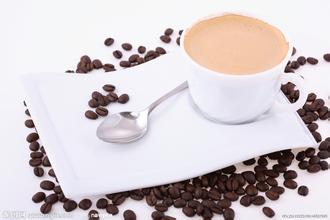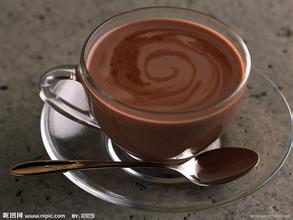Standard steps for thickness calibration of hand-made coffee powder are graphically adjusted
Standard steps for thickness calibration of hand-made coffee powder are graphically adjusted
Humidity factors play a role not only in sunny and rainy days, but also at different times of the day. Generally speaking, the humidity in the morning and evening is higher than that at noon, so according to the influence of humidity factors, the grinding degree should be thickened in the morning and evening, and finer at noon.
There are many other factors that affect the degree of grinding, including the roasting degree of coffee beans (although coffee beans used by Espresso should use a deeper roasting degree, but sometimes different roasting degrees may be used to roast formula beans for richer taste), blended recipes, and so on. All of the above are the most common and can be mastered by baristas. The previous sections are all about the adjustment of the basic factors in the production process in order to meet that taste standard on the premise of understanding the good taste of Espresso (see the taste of Espresso). There are many places in the world of Espresso that we don't fully understand, and we would like to explore this wonderful world of coffee with you.
Roughness is a good way to control bitterness, because the finer the grinding, the higher the extraction rate, the easier it is to extract high molecular weight bitter substances such as chlorogenic acid, quinic acid, caffeine and carbides. On the contrary, if the grinding is too rough, the lower the extraction rate is, the more difficult it is to extract the astringent bitter substance with high molecular weight, but the sweet taste with middle molecular weight may remain in the coffee grounds because of insufficient extraction, which is a waste. Therefore, baristas should pay attention to whether the thickness of the powder is normal every day. Too thick or too fine will cause abnormal extraction and affect the flavor of coffee.
The degree of grinding of all kinds of bubble cooking methods, from coarse to fine, in the following order:
French filter kettle (rough grinding), electric drip pot (medium), hand punch, siphon pot, desktop smart filter cup (medium), mocha pot (medium), espresso (fine), Turkish coffee (very fine).
According to the European Fine Coffee Association (SCAE-Speciality Coffee Association of Europe), the rough grinding of the French filter pot indicates that each bean is crushed into 100,300 particles, each about 0.7mm in diameter. In the medium rough grinding of the electric filter pot, each bean is ground into 500 grains of 800 particles, with a diameter of about 0.5 mm. Moderately ground by hand and siphon, each bean is ground into 1000 to 3000 particles with a diameter of about 0.35. The fine grinding of espresso in which each bean is ground into 3500 particles with a diameter of about 0.05mm. Turkish coffee is ground into a flour-like ultra-fine powder, and each bean is ground into 15000mm 35000 particles.

Important Notice :
前街咖啡 FrontStreet Coffee has moved to new addredd:
FrontStreet Coffee Address: 315,Donghua East Road,GuangZhou
Tel:020 38364473
- Prev

The Fusion of Italian Coffee-the difference between the temperature of Hot Water in Italian Coffee Machine and American style
The fusion of espresso-the difference between the temperature of hot water in espresso machine and American style, but Italians like to drink plain coffee, that is, Italian concentrated and Italian concentrated relatives and friends: short strong Ristresso, long strong Lungo, etc., or Italian macchiato with a little milk, which is small and can be finished in a minute. And lattes, cabs, mochas, caramel macchiato
- Next

Introduction to the method of taste treatment for the description of regional flavor of hand-made coffee beans
Introduction to the regional flavor description of hand-made coffee beans: 1. Rough grinding: suitable for high water temperature and fast flushing (about 2 minutes); 2. Medium grinding: suitable for about 85 water temperature and medium speed brewing (about 3 minutes); 3. Fine grinding: suitable for low water temperature, 75-80 degrees water temperature and slow brewing (more than 3 minutes) 1. Because fresh beans contain a lot of peroxide.
Related
- Beginners will see the "Coffee pull flower" guide!
- What is the difference between ice blog purified milk and ordinary milk coffee?
- Why is the Philippines the largest producer of crops in Liberia?
- For coffee extraction, should the fine powder be retained?
- How does extracted espresso fill pressed powder? How much strength does it take to press the powder?
- How to make jasmine cold extract coffee? Is the jasmine + latte good?
- Will this little toy really make the coffee taste better? How does Lily Drip affect coffee extraction?
- Will the action of slapping the filter cup also affect coffee extraction?
- What's the difference between powder-to-water ratio and powder-to-liquid ratio?
- What is the Ethiopian local species? What does it have to do with Heirloom native species?

